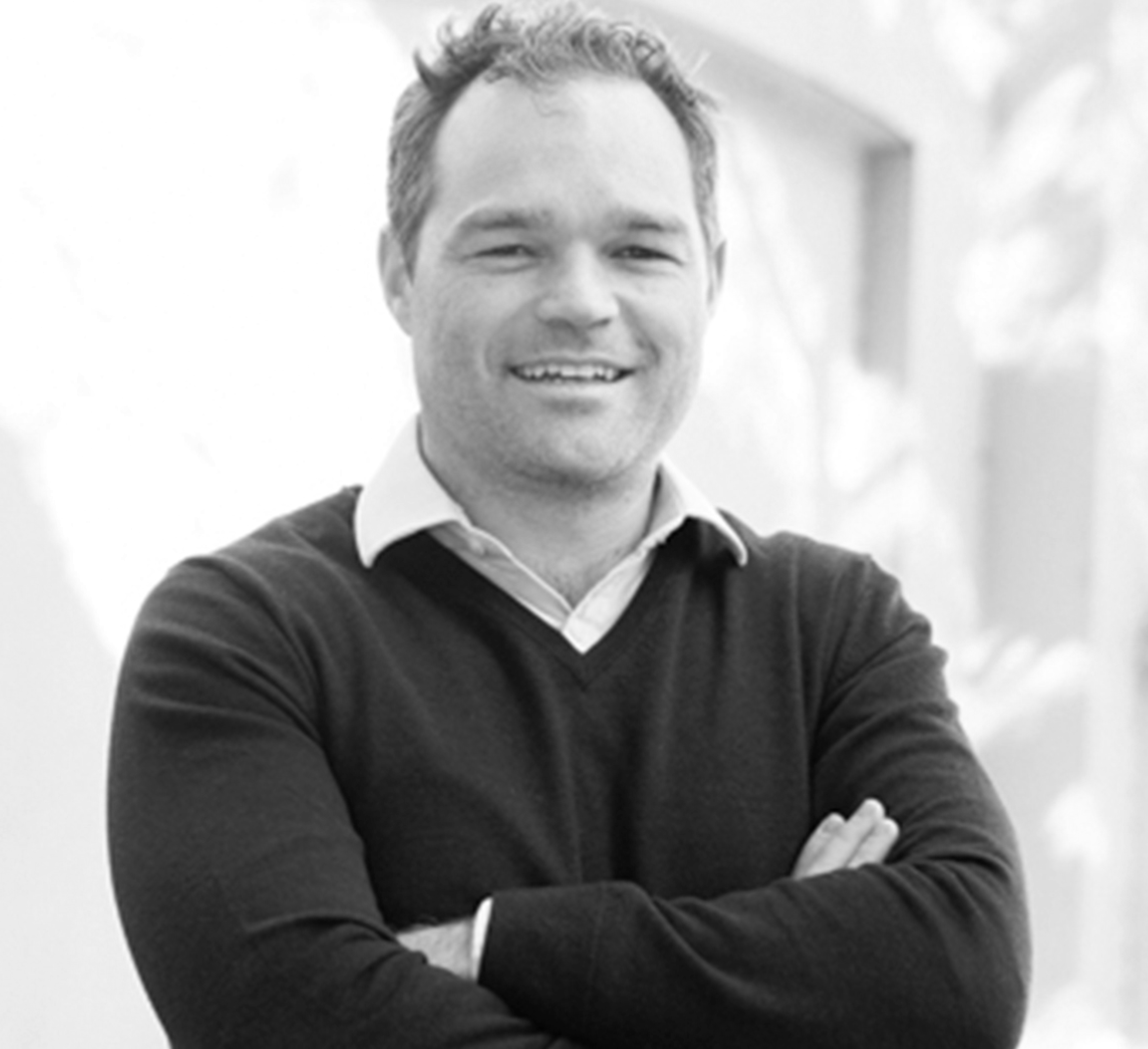29: John Stretch
Consultant and author
With a greater degree of instability in the world, financial executives can no longer rely solely on budgets, John Stretch explains the benefits of rolling forecasts.

CIARAN RYAN: This is CFO talks and today we’re very happy to welcome John Stretch, who began his career as a partner in one of the big four audit firms and that was before he started his own consulting practice. He has an abiding interest in business forecasting and has presented workshops on this topic in many countries. He’s also got a book out and it’s called Managing with Rolling Forecasts, which is listed on Amazon, and sells all over the world. He’s been a regular presenter of in company executive courses on financial management topics and in earlier years he was a visiting lecturer at Wits Business School and at the University of Cape Town Graduate School of Business. Today he’s turned his attention to online business education, authoring and developing online
e-learning solutions and case studies on his website. Welcome, John.
JOHN STRETCH: Thank you, Ciaran, it’s very nice to be here.
CIARAN RYAN: Great to have you here. Your articles have appeared in all sorts of different places, including CFO Magazine, as well as professional institutes’ business school journals, let’s say you’re a well-travelled author of articles. One of the things that you’ve been very hot on is forecasting, bearing in mind that we’re talking to the CFO community and finance executive community here, and you are particularly interested in rolling forecasting, and you say this is an area that falls squarely under the purview of the CFO. Explain, first of all, what rolling forecasting is and why it’s so important.
JOHN STRETCH: Well, Ciaran, a forecast is a prediction and when you update your forecast as new information comes in, then it becomes a rolling forecast. Let’s be clear, this isn’t a new idea, it’s been around for a long time, everybody uses rolling forecasts all the time in their daily lives. So in business when you update your budget by adding a new forecast month or quarter, when the previous month or quarter has past you’ve got a rolling forecast. Anyone who does a personal cash flow forecast every month understands this, so you extend regular cash flow forecasting in a business to forecasting your profit and loss account or income statement and your balance sheet. But the bigger question, I guess, is why it’s important, companies need to ask themselves why do they budget and why do they spend so much time on their budgets. Budgets were actually designed to fulfil four purposes, and the first one was to allocate resources to populate your business plan with money and once you’d done that the number you came up with turned out to be the target for the year and at the same time, if people asked you about your forecast for the future, you could use the same number, and, finally, it gave you a benchmark for control. Let’s be clear, those four things are actually necessary for organisations, you need to have plans and targets and so on. So for most of last century this budgeting story worked pretty well but then the world changed, it started to become unstable round about the turn of the century, I believe, and budgets went out of date very fast.
CIARAN RYAN: Which turn of century are you talking about here?
JOHN STRETCH: I’m talking about the year 2000.
CIARAN RYAN: Budgets went out of practice or out of popularity?
JOHN STRETCH: No, they started to be unusable as proper targets or forecasts at that stage and because there was a much greater degree of instability in the world. So, for example, we had the oil crisis and the oil price fluctuating all over the place, which rendered budgets invalid. In our country we had the Eskom rolling blackouts, which did exactly the same thing, as a mine you didn’t know one day from the other whether your budget meant anything.
Developing business scenarios around unforeseen events
CIARAN RYAN: Exactly, so you’re really talking about the last ten years when we had the oil price spike and the commodity price spike. I guess if you’re doing a three-year forecast in any business, how are you, for example, projecting interest rates and electricity prices and that sort of thing. So you’ve got to create more variability in your input factors, let’s say, on a forecast.
JOHN STRETCH: That’s right, Ciaran, but one has to distinguish then between the variables that you’ve got some kind of control over and that you can forecast with accuracy. There are things out there in the environment that you just can’t forecast, they happen completely randomly. The answer then is that you develop business scenarios around those issues. So the forecast is the things you can forecast and for the things that you can’t, you need to build some scenarios so that you can respond to those things.
CIARAN RYAN: So this is why the rolling forecast comes in because it gives you much more flexibility in how you can adjust your input and get greater accuracy as conditions change.
JOHN STRETCH: Think about the twin towers in 2001, every Fortune 500 company in America had their budgets completely invalidated, they had to start again from scratch.
CIARAN RYAN: You seem to be suggesting that many CFOs are not doing forecasting correctly and that in itself poses a risk to companies, is that correct?
JOHN STRETCH: That is what I am suggesting, now let’s be clear, I haven’t done any proper research into the amount of research and the way people forecast in South Africa. As far as I know, nobody has done it, but I do run a lot of seminars and I talk to a lot of MDs and FDs. Yes, people are not forecasting correctly, or they are not forecasting at all or they are just extrapolating. One CFO said to me, oh, I walk down the corridor and talk to the general managers and ask them how they are doing, and then I produce my forecast. There are companies that just forecast to the wall, so they update their plans to the year end every time the actual results come out, but you have to try. Companies have this excuse that you can’t forecast because the data is incomplete, and the conditions are uncertain and so on. So ask Microsoft, ask Electrolux, these companies have turned forecasting into an art and they have a determination and a capability, the things that we can forecast we will forecast and the things that we can’t we will build scenarios around, so we know how to respond.
CIARAN RYAN: If we look at some of the recent meltdowns on the JSE, such as Steinhoff and Tongaat, is there a way that we could’ve picked up ahead of time that disaster was about to happen? I ask this because in the case of Steinhoff, information on liabilities was withheld from the public. Are there still ways around this lack of information that you often get from companies that are hitting a patch of trouble?
JOHN STRETCH: The answer has to be yes and no, I think Tongaat’s situation is a bit different from Steinhoff’s situation. After the Tongaat event and the Steinhoff event there were a few smart people in our financial community who said they could have seen it coming or they did see it coming. One or two people, I don’t think I should mention names did the analysis and…
CIARAN RYAN: I think Dave Woollam was one, we spoke to Dave last week.
JOHN STRETCH: I wanted to say that Dave Woollam did what I call an excellent review and how did he do it, he went back ten years and he graphed all the information and analysed it and pulled out statistics and so on. In a multinational environment we’ve got many auditors and different exchange rates…like Steinhoff, I think it’s almost impossible to pick it up, although we had somebody else who said that they did. But the truth is that there are a number of investment companies in our community that didn’t hold Steinhoff shares, they never touched it, they won’t necessarily tell you why because maybe they want to keep their trade secrets to themselves but that’s really true. We do know that there was one analyst at Investec who picked up the problems with Tongaat a year or two years in advance.
CIARAN RYAN: And he was forced to apologise.
JOHN STRETCH: Yes, indeed, he was.
CIARAN RYAN: I wonder how the company feels about that after he was proven right.
JOHN STRETCH: I think you’ve got to try to analyse the data in integrated reports and you need to go back more than five years, you need to build predictive models and run these Monte Carlo simulations, if I have my analyst hat on. My work in the banking industry has also taught me that there are certain financial ratios that when you combine them, they’re fairly reliable predictors of future insolvency. This whole business of predictive analytics, where you can put ten years’ worth of financials onto a computer programme, is still evolving. There is better software that’s going to be coming out that can analyse those financial and operating numbers.
CIARAN RYAN: We’re talking about machine-learning predictive analytics here, right, where you can establish relationships and correlations between things that you might not otherwise connect. For example, we’ve had a couple of people talking about this on the podcast, where the oddest things, you might find most of your sales are done at nine-fifteen in the morning, just after the guy has had his coffee, I’m throwing that out there, it’s not real but some of these odd little things that can get picked up. So you’re saying that with better analytics and better machine-learning we’ll get better at forecasting?
Converting from fixed annual budgets to rolling forecasts
JOHN STRETCH: Yes.
CIARAN RYAN: In one of your articles you say that organisations clearly need a better planning model than the annual budget, the great revered holy scripture of the annual budget, the need for agility and quick response has motivated many organisations to convert from fixed annual budgets to dynamic rolling forecasts, which are regular updates based on the best information currently available. Are CFOs getting the message that there’s a better way to budget?
JOHN STRETCH: I think they are. Let’s first of all make it clear that rolling forecasts don’t exist in a vacuum, they are part of what I call a new age management system. So it’s a new way of evaluating performance, it’s a new way of predicting, it’s a new way of dealing with uncertainty. The quote that you’ve just read out is actually about resource allocation and I can use the example of this massive organisation, Unilever, in the United States, where the CFO was interviewed recently and he said, look, we used to have the annual budget, we spent six months every year putting the thing together and as soon as the year started it was out of date, so we decided to abandon budgeting. He said and now we meet every month and we make a forecast for all our product categories, as to what they’re looking like in the future and then we take away money from divisions that aren’t performing and put them into divisions that are performing, we’ve got the agility to do that. Remember the old adage, you can’t spend the money if it’s not in the budget. So they’ve thrown that idea completely out the window and that’s what we mean about agility and quick response.
CIARAN RYAN: If CFOs need better forecasting skills, I guess we’re going to have to go outside of the traditional accounting skills pool to find it. What kind of people are we looking at here who are going to be able to assist the CFOs to do better forecasting?
JOHN STRETCH: Ciaran, I think there are two kinds of skills. First of all, the universities are producing a fearsome kind of accountant right now, where you are taking on someone who has got a base degree in stats or maths and who can do their own coding because they are qualified computer programmers, and these people have grown up with access to great technology and automation, and we need people who can actually exploit that stuff. So rolling forecasts require teams of modelers who can build these automated simulation models and who are capable of creating multiple ‘what if’ scenarios all the time. There are organisations here, Multichoice is one, where they have hired people to do specifically that job, to get a better handle on the future for each one of their operations, SuperSport and so on.
CIARAN RYAN: That’s interesting, have you been involved in that?
Repurposing business for the worst possible times
JOHN STRETCH: I was involved, yes.
CIARAN RYAN: I’m a big believer in data analytics and we touched on that a minute ago, since you can pick up unusual trends by taking a very granular approach to, say, revenue and looking at where revenue growth is actually coming from. In mining, for example, we’ve seen a great culling of less profitable assets by groups such as Anglo American and Anglo Platinum. They’ve just been selling off these assets that weren’t making the required returns that they were looking for. They took a view that there are certain things that they cannot control such as commodity prices, so they repurpose their businesses for the worst possible times and that meant selling off a lot of their assets. Even before selling those assets they would have explored various different scenarios, the high, low and middle road, that’s been a very popular thing in South Africa, looking at the high, low and middle roads. But in many cases we see companies selling off assets at exactly the wrong time, just before the commodity prices turn and I guess the real question I am going to ask is, is there a better way to know the unknown, such as future commodity prices?
JOHN STRETCH: I have to learn what I can from the Anglo American situation and they were faced with exactly that situation and how did they respond to it, they became one of the top two in scenario planning in the world, themselves and Shell. If you read any of Clem Sunter’s work, you know all about that. So they decided that there are a whole lot of things here that we can’t predict, we don’t know what’s going on, do we either now see ourselves as victims of those things or do we look at alternatives and try to conquer them and that’s what they did.
CIARAN RYAN: Right, of course they have been through various generations of management there and each chief executive brings a slightly different style to the chair. I think Mark Cutifani at Anglo American decided that there is one thing that we’re not certain about and that is what is the future of these various commodity prices, so we’re going to repurpose Anglo for any kind of scenario and let’s take a very conservative, even pessimistic, view on this. I think on that basis his team decided they were going to get rid of certain assets but at the same time invest massively in new technology. So we are looking at a whole new way of mining, I think, going forward. They even say that the mine of the future is going to look like a farm, all the activity is going to take place below ground, you’re not going to see much above ground. Blasting will be a thing of the past, they have new drills, even without this heavy vibration. Anyway, if you were at Anglo, how would you employ forecasting to better run the business?
JOHN STRETCH: This is a bit of a curve ball, I don’t know mining very well and let’s be very clear, I think Anglo American could teach me a very great deal about planning and forecasting myself. So they are world leaders in scenario planning and that sends that clear message that when your business is driven by factors beyond your control, which tend to behave randomly, you have to try very hard to narrow that randomness down. I think that’s what Mr Cutifani and his group have been looking at, which is an exercise in risk management, they’ve been trying to drive the risk out of the organistion as much as they possibly can. Maybe in mining what are the big decisions, the first one is the portfolio decision, what commodities and in which part of the world, and to what extent do you work with them. The second one, I think, is that pricing decision, that timing decision, when do you sell your stockpiles. Those are the two things that you actually need to do the scenario planning for in order to get to the result.
CIARAN RYAN: If you had any books to recommend, a good read, what would it be?
JOHN STRETCH: Thank you, Ciaran, there are hundreds of articles, which fairly superficially, in most cases, which explain what rolling forecast is but they don’t get to grips with some of the real nuts and bolts that CFOs have to get to grips with like how do you deal with and communicate uncertainty in forecasts, every forecast has got different amounts of uncertainty in it. Secondly, there’s an issue of what we call business drivers, driver-based forecasting, where you don’t forecast the rand or dollar numbers, you forecast the things that drive the results. There’s a whole new unexplored area that people don’t get into in enough detail. You don’t find many articles that get down there, that actually come out of the trenches, in my opinion. So there are a number of books that would have a chapter on rolling forecasts as part of a bigger philosophy, this new age management system I’m talking about. There’s a guy called Bjarte Bogsnes, who’s a Norwegian, and he’s got a book called Implementing Beyond Budgeting and that is brilliant.
CIARAN RYAN: Is it very technical?
JOHN STRETCH: No, it’s not actually, it’s more accessible to HR people than you would ever believe because it has to do with philosophy. Then there are the two Steve’s, Steve Morlidge and Steve Player, who are both chairmen of forecasting organisations, one in the UK, one in the United States, and they’ve got a couple of books called Beyond Performance Management and The Little Book of Beyond Budgeting. But there’s no book on accounting nuts and bolts, if you search on Amazon and type rolling forecast books, there’s only one that will come up.
CIARAN RYAN: So here we are going to do a punt for your book, John. It’s called Managing with Rolling Forecasts and it’s by John Stretch, and it’s available on Amazon.
JOHN STRETCH: That’s right, the first edition was 2008 and then I revised it again in 2012, so it’s currently seven years old and it’s in the process of being revised. It will only come out in a couple of months’ time, and it will be on Amazon or you can get hold of it through my website www.johnstretch.com
CIARAN RYAN: John, we are going to have to leave it there, thanks very much for coming in to the studio and we’d love to have you back again to talk about more aspects around rolling forecasting, since this is something that CFOs really need to get their minds around.
JOHN STRETCH: Thank you.





